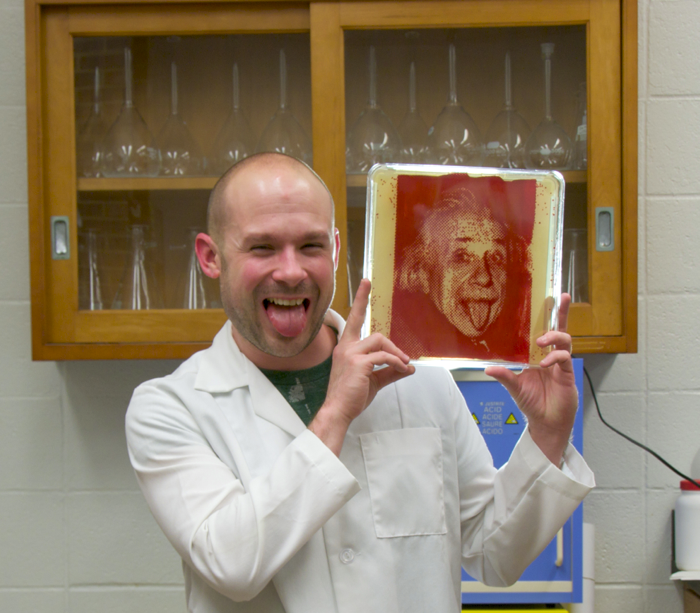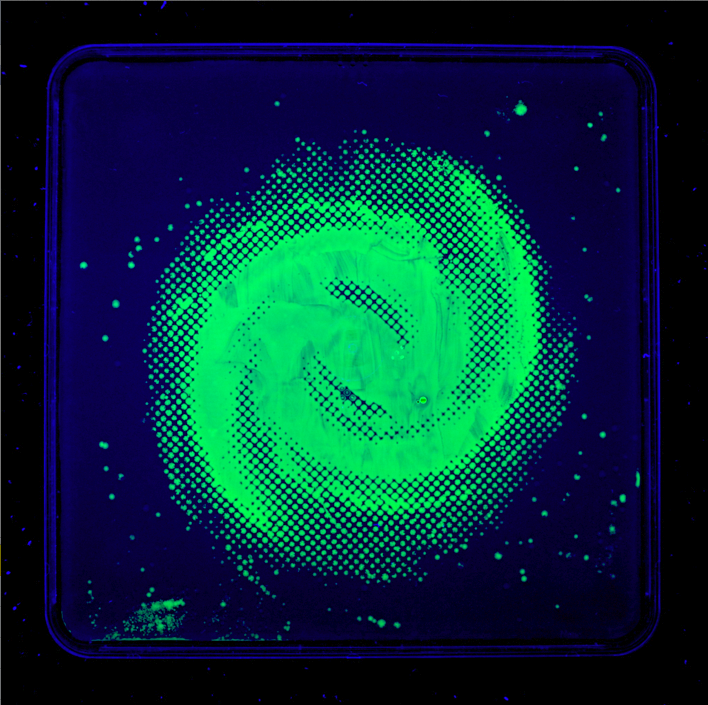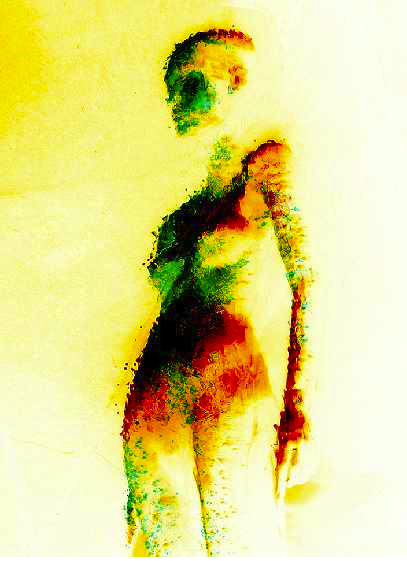Zachary Copfer‘s Bacteriographs

Zachary Copfer, a former microbiologist has now turned his science skills to his new passion: photography. He is pushing the envelope with an amazing photo printing technique that uses controlled bacteria to produce images instead of traditional dark room equimpment like developers and photo-sensitive papers. Copfer calls his technique “Bacteriographs” and he is not alone in the pursuit of transforming proteins and bacteria into art.
Bacteriographs: How are they done?
Copfer first transforms bacteria into fluorescent protein compounds. He then applies the protein on a plate–much in the same way liquid emulsions where once applied on metal or glass. This plate serves as the equivalent of photo paper. Over this plate he exposes a negative of the image he wants to develop, but instead of visible light he uses radiation. The next step is to let the bacteria grow on the plate. The radiation going through the negative will affect where and how the bacteria grows on the plate. Finally, to seal and isolate the bacteria, he covers the image in a layer of acrylic and resin.

More Scientists Use Organic Proteins to Create Art
Copfer adds his name to a growing list of scientist-artists who are pushing the conventional boundries of art, photography and design. Designer Suzzane Lee uses a kombucha-based yeast type growth to create a fabric to make “bio-couture” (check out her great TED presentation). It looks like leather but is vegetable based. Another example is Anke Domaske, a former microbiology student, recently resurrected German research from WWI to create fabric from milk protein powder. It is called Qmilk and looks like silk and but has the added benifit of smoothing the skin, so you can now wear your milk bath.

